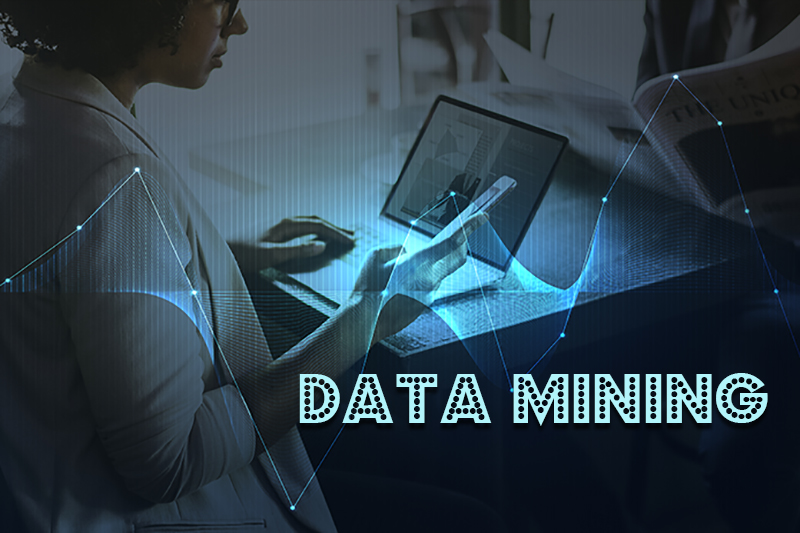Due to the exponential growth in the quantity of electronic health records, data mining services have gained in importance. In the past, doctors and other medical professionals kept track of patient information on paper, which made it difficult to manage the information. But today, the development of new approaches reduces the need for human work, makes data easily accessible, and allows healthcare organizations to manage patient queries and big data analytics effectively. Healthcare organizations rely on data mining services to obtain valuable data that is needed to assist them in deciding how to manage their customer relationships; healthcare insurers need these services to discover fraud and abuse; and doctors benefit from these services by obtaining data required to identify effective treatments and best practices. Good and actionable data also helps ensure that patients receive better and more affordable healthcare.
What Is Data Mining and Why Is It Important for Healthcare Firms?
Whether data mining is utilized in business or healthcare, its goal is to analyze big data sets to find relevant and comprehensible patterns. These data patterns assist in forecasting business or information trends and in deciding how to respond to them. Data mining can be applied to the healthcare sector, especially to save costs by improving efficiencies, enhance the quality of life of patients, and perhaps most importantly save more patient lives.
Healthcare facilities covered by HIPAA are required to retain electronic health records containing a wealth of patient data and data mining is governed by these requirements. It is necessary to use methodologies and technologies in healthcare to recommend the best treatments because the traditional techniques of evaluating and processing enormous datasets of accumulated information at the hospital through EDI transactions are becoming more difficult. Additionally, data mining benefits healthcare organizations in the following ways.
- Analyze the progress of the treatment
- Utilize predictive analytics to suggest treatments
- Improve the quality of medical care
- Effectively manage outbound patients efficiently
How Does Data Mining Work in Healthcare?
The foundation of medical data mining is the computational capacity of cloud solutions and the self-learning capabilities of AI (artificial intelligence) algorithms. In addition, you’ll also need actual data sets to train the model to spot patterns and draw conclusions.
The following stages will be followed by the data mining process once all the necessary elements have been put in place:
- Acquisition/selection. A target set is created using the original data at this stage.
- Preprocessing. Data is formatted, and standardized.
- Data mining. The process of actually finding patterns and knowledge is called mining.
- Interpretation. Gaining knowledge from the patterns discovered.
These are the fundamental procedures for data mining in the healthcare sector. There is one more thing, though, that deserves to be mentioned. There is a feature of data mining that is unique to the healthcare industry, a highly strict regulations on the security of personal data. Make sure you meet data security needs and adhere to all regulations if you’re creating data mining software for the US market. It’s usually advisable to put conventional security procedures in place right away to stop any breaches of medical data.
Now that you have learnt about how data mining works in the healthcare industry, it is important to understand the techniques used in data mining.
|
To learn more, read: What Are the Different Data Mining Methods Used For Better Accuracy? |
Two Examples of Application of Data Mining in Healthcare
Faster diagnostic processes, higher accuracy rates, and limitless prospects for new medical studies are all results of the rapid growth of data analytics technologies. Here are two instances of data mining in healthcare that demonstrate this.
- Fraud detection and prevention
A group of Italian researchers examined fraud-related behavior trends in 183 hospitals around Lombardia. The procedure was divided into two steps:
- The team discovered groups of institutions with similar heart failure treatment protocols using K-means clustering. This was done to make it easier to identify outliers, or unusual behavior patterns.
- Human auditors oversaw the second stage and helped the algorithmic model by cross-validating outliers based on fraudulent conduct.
- The researchers were able to identify two hospitals whose patterns suggested potential fraud as a result. Since the data mining algorithms were just being tested, nothing more was done.
- Data mining to segment brain tumors
Six researchers have finished their study on using K-means clustering and deep learning to categories brain cancers (a subset of machine learning). MRI scans were used to create the initial data sets, which were then loaded into a data mining system for preprocessing and algorithmic analysis. The algorithm was able to distinguish between benign and malignant tumors after sending the data through a pipeline of numerous statistical classifiers and geometric identification models. The average accuracy that was obtained was 95.62%, which was far greater than anticipated or what was previously attained in studies of a comparable nature.
Scientists added the generated data to the MRI scans to improve the model’s training. In order to enhance the volume of data for deep learning algorithms, the team took the original photos and applied cropping, flipping, distortion, and noise. Deep learning algorithms require vast amounts of labelled data for training. The end result was a system that has a remarkable accuracy of 98.3% for classifying brain tumors.
Future of Data Mining in Healthcare
The move to use patient data to improve various aspects of the healthcare business has been greatly aided by the switch from paper to electronic health records. In order to eliminate medical errors and enhance patient care and happiness, healthcare professionals are now able to share their expertise across all facets of the industry thanks to the implementation of electronic health records. Cost-cutting benefits of data mining are also anticipated. McKinsey & Company research suggests that system-wide data analytics initiatives might reduce total healthcare costs by 12 – 17%.
The Centers for Medicare and Medicaid Services announced that the national healthcare spending in the United States topped $3.5 trillion in 2017. The predicted cost reduction from system-wide data analytics initiatives might be between $420 billion and $595 billion if a 12 – 17% savings is added to that figure. Data mining could be the key to improving patient care by lowering costs, identifying treatment plans and best practices, assessing efficacy, spotting fraudulent insurance and medical claims, and measuring performance. This shows that the demand for data mining services is going to rise in the coming years.




